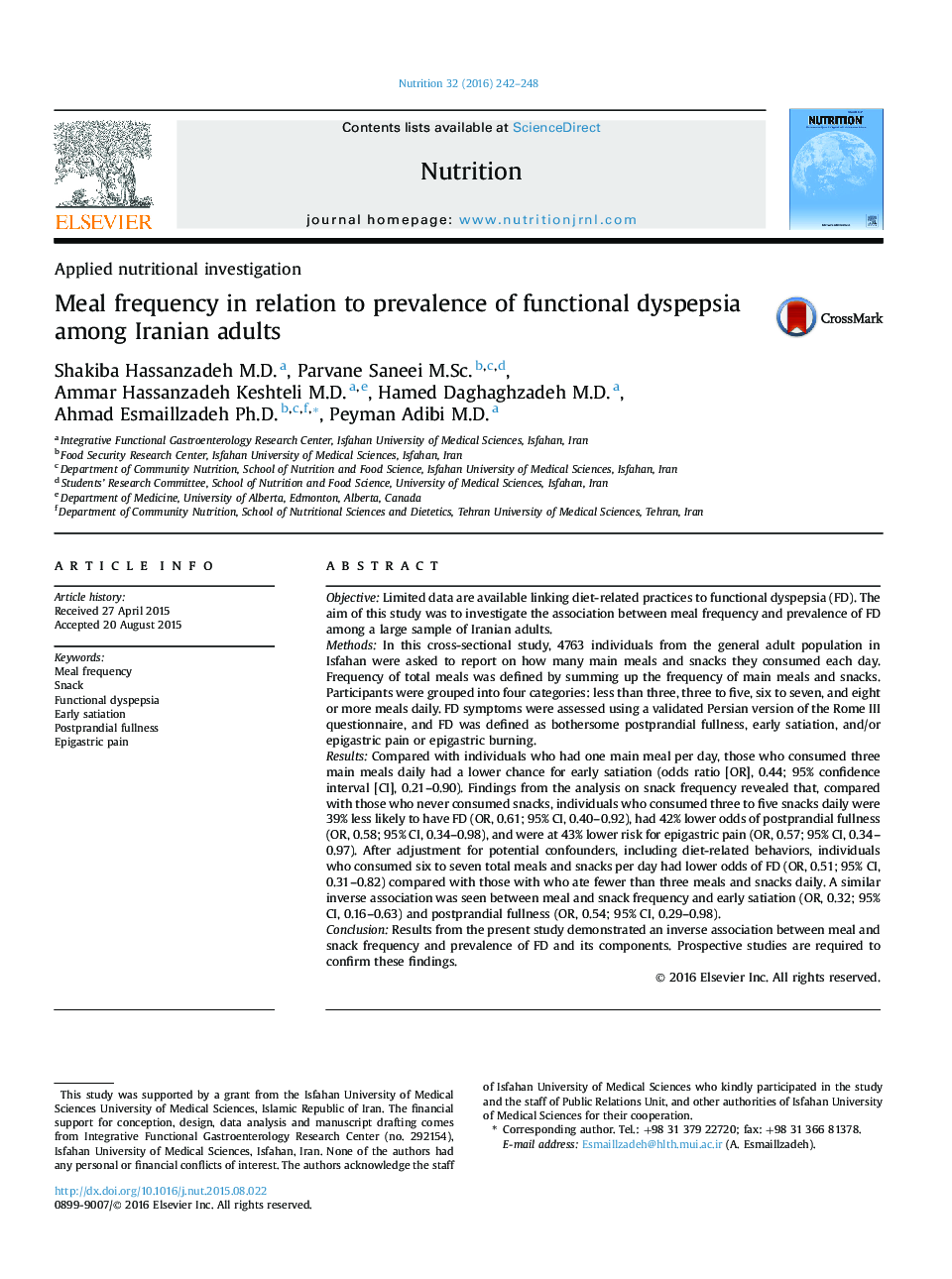| کد مقاله | کد نشریه | سال انتشار | مقاله انگلیسی | نسخه تمام متن |
|---|---|---|---|---|
| 6089412 | 1208543 | 2016 | 7 صفحه PDF | دانلود رایگان |
- Consuming three main meals per day was inversely associated with functional dyspepsia among Iranian adults.
- More snacking was associated with lower odds of functional dyspepsia, postprandial fullness, and epigastric pain.
- Having six to seven meals and snacks daily was related to the lower likelihood of functional dyspepsia, early satiation, and postprandial fullness.
ObjectiveLimited data are available linking diet-related practices to functional dyspepsia (FD). The aim of this study was to investigate the association between meal frequency and prevalence of FD among a large sample of Iranian adults.MethodsIn this cross-sectional study, 4763 individuals from the general adult population in Isfahan were asked to report on how many main meals and snacks they consumed each day. Frequency of total meals was defined by summing up the frequency of main meals and snacks. Participants were grouped into four categories: less than three, three to five, six to seven, and eight or more meals daily. FD symptoms were assessed using a validated Persian version of the Rome III questionnaire, and FD was defined as bothersome postprandial fullness, early satiation, and/or epigastric pain or epigastric burning.ResultsCompared with individuals who had one main meal per day, those who consumed three main meals daily had a lower chance for early satiation (odds ratio [OR], 0.44; 95% confidence interval [CI], 0.21-0.90). Findings from the analysis on snack frequency revealed that, compared with those who never consumed snacks, individuals who consumed three to five snacks daily were 39% less likely to have FD (OR, 0.61; 95% CI, 0.40-0.92), had 42% lower odds of postprandial fullness (OR, 0.58; 95% CI, 0.34-0.98), and were at 43% lower risk for epigastric pain (OR, 0.57; 95% CI, 0.34-0.97). After adjustment for potential confounders, including diet-related behaviors, individuals who consumed six to seven total meals and snacks per day had lower odds of FD (OR, 0.51; 95% CI, 0.31-0.82) compared with those with who ate fewer than three meals and snacks daily. A similar inverse association was seen between meal and snack frequency and early satiation (OR, 0.32; 95% CI, 0.16-0.63) and postprandial fullness (OR, 0.54; 95% CI, 0.29-0.98).ConclusionResults from the present study demonstrated an inverse association between meal and snack frequency and prevalence of FD and its components. Prospective studies are required to confirm these findings.
Journal: Nutrition - Volume 32, Issue 2, February 2016, Pages 242-248
